Small Group Experiential Travel
Tour Code
PA3 When To Go
Feb, Oct, Nov Start
Panama City (PTY) End
Managua (MGA) Countries Visited (3)
Costa Rica, Ni...More > Overnight In (11)
San Jose, Quep...More > Activity Level
2 - Moderate? Tour Type
Cultural? - Overview
- Info & Inclusions
- Itinerary
- Map & Hotels
- Photos
- Dates & Prices
Highlights
- Max Group Size 18
- Partial Canal Transit
- Bocas del Toro
- White sands & coral reefs
- Exploring the canals of Tortuguero
- Monteverde Cloud forest walk
- Manuel Antonio's spectacular beaches
- Granada - cruise among the volcanoes
- Singles friendly (view options for single travellers)
Description
On our Panama, Costa Rica & Nicaragua tour you'll find yourself gliding through the waters of one of the most famous landmarks in the world, the Panama Canal, is the first of many adventures on this exciting 23-day tour through Panama and the naturalist dreamlands of Costa Rica & Nicaragua.
Taking 34 years to reach completion, the Canal stands today as a marvel of design, engineering and human enterprise and is one of the must-see attractions on a tour of the fascinating country. That said, the nation's bounties are by no means restricted to the Canal alone and we discover that Panama in fact has a wealth of other lesser-known attractions, from the historic trails in Soberania National Park and the natural wonder inherent in the primeval rainforests Chiriqui Highlands and Boca del Toro, to the bustling streets of the capital, Panama City.
Crossing into Costa Rica, we begin this stimulating leg of the journey by casting off for a boat trip along interconnecting rivers and canals through remote and untouched wilds to the Caribbean coast. Lush vegetation and unique bird life line the narrows of our course in the Tortuguero region and then it's back onto land for a visit to the museum to learn about the local ecology and to witness it for ourselves with later expeditions into the fairytale-like Monteverde Cloud Forest.
Our time in Nicaragua features beautifully-located Granada, with views of multiple volcanic islands, charming colonial architecture, and some of the friendliest people you'll ever meet.
Taking 34 years to reach completion, the Canal stands today as a marvel of design, engineering and human enterprise and is one of the must-see attractions on a tour of the fascinating country. That said, the nation's bounties are by no means restricted to the Canal alone and we discover that Panama in fact has a wealth of other lesser-known attractions, from the historic trails in Soberania National Park and the natural wonder inherent in the primeval rainforests Chiriqui Highlands and Boca del Toro, to the bustling streets of the capital, Panama City.
Crossing into Costa Rica, we begin this stimulating leg of the journey by casting off for a boat trip along interconnecting rivers and canals through remote and untouched wilds to the Caribbean coast. Lush vegetation and unique bird life line the narrows of our course in the Tortuguero region and then it's back onto land for a visit to the museum to learn about the local ecology and to witness it for ourselves with later expeditions into the fairytale-like Monteverde Cloud Forest.
Our time in Nicaragua features beautifully-located Granada, with views of multiple volcanic islands, charming colonial architecture, and some of the friendliest people you'll ever meet.
Price Includes
- Full-time Tour Leader plus local guide support at several locations.
- Breakfast and dinner daily (hotels and local restaurants).
- All transport, sightseeing and entrance fees for sites noted as 'visited' in the detailed itinerary. Gratuities for local guides, drivers, restaurant staff, hotel porters (if available).
- Airport transfers for land & air customers and for early arriving/late departing land & air customers who book their flights AND extra hotel nights through us.
Exclusions
- International airfare to/from the tour.
- Tour Leader gratuity, lunches, drinks, personal items (phone, laundry, etc), departure taxes, domestic and international air taxes (if applicable).
- Airport transfers for Land Only customers.
- Optional trip cancellation insurance.
Trip Info
- Seasonality and Weather:
October & November are within the "green" in Panama, especially on the Caribbean side. Costa Rica & Nicaragua are also in their "green" season on the Pacific coast, but the Caribbean coast experiences relatively drier and sunnier weather. Come November drier weather has arrived. Visiting during these times can be like experiencing a lush, green Central America, with fewer tourists and lower prices. The rainforests are particularly vibrant, and the rain can bring a welcome coolness to the cities.
In February/early March, both Panama and Costa Rica/Nicaragua are in their dry season, with plenty of sunshine and minimal rainfall. - Transport and Travel Conditions:
Road transport by private air-conditioned motor coach, 12-32 seats depending on ultimate group size (see 'group size'). Internal flights in Panama via scheduled domestic carriers in smaller aircraft with limited space for luggage. Panama City-San Jose via scheduled airline.
As this is primarily nature-focused experience, most of our activities will occur outdoors and involve walks on uneven/rocky surfaces at a leisurely pace. You should be prepared with the right footwear and be capable of being on your feet for several hours in order to fully enjoy what these destinations have to offer. We also have walking tours in towns and cities that feature some uneven surfaces and cobblestones.
Our difficulty level "2" rating refers to the above-mentioned busy days, walking tours on uneven terrain, lack of handrails (public and elsewhere, ie shower stalls), and fatigue that can be caused by heat and humidity in coastal locations.
Am I suitable for this tour? Please refer to our self-assessment form - Activity Level: 2
These are particularly busy tours that feature a lot of moving around, sometimes by train and short journeys on local transport. Walking tours of towns and cities are leisurely but you should be prepared to be on your feet for several hours. Some of our cultural trips that occur at high altitude and/or require greater independence with baggage handling (at hotels, airports, train stations) also fall into this category.
To learn more about the Activity levels, please visit our tour styles page. - Accommodation:
Well-located, heated/air-conditioned, mid-range (3-star) hotels with en suite toilet and bath throughout (probably shower only). Single rooms are limited and likely smaller than doubles. Hotel porter service is sometimes available (see 'inclusions') though you should be independent with your luggage. Some hotels have outdoor swimming pools.
Please click the "Map & Hotels" tab for more information. - Staff and Support:
Tour Leader, driver/s, and local step-on guides at various locations. - Group Size:
Maximum 18 plus Tour Leader
View / Print Itinerary
- Day 1:Arrival in Panama CityWelcome to Panama City, Central America's most cosmopolitan capital, where skyscrapers pierce tropical skies and two great oceans meet through human ingenuity. This vibrant metropolis serves as both a dynamic regional hub and gateway to extraordinary tropical adventures.
Panama's unique position welcoming both east and west has created a cultural cocktail that's refreshingly fluid and dynamic. Centuries of trade, immigration, and interoceanic commerce have shaped a city where colonial Spanish heritage blends with Caribbean rhythms, while gleaming modern towers reflect Panama's role as a contemporary financial centre.
Tonight, we gather fellow travellers for dinner, sharing anticipation for our journey through one of the world's most strategically important and naturally diverse countries.
Overnight in Panama City.
Included Meal(s): Dinner, if required - Day 2:Partial Canal TransitThe world's most famous waterway beckons as we embark on a once-in-a-lifetime journey through the Panama Canal, one of humanity's greatest engineering achievements.
Our adventure begins with a 15-minute drive to Balboa port, where we board the passenger ferry for our partial canal transit. At Miraflores Locks, we witness the extraordinary process as ships rise 16 metres (54 feet) through ingenious two-step chambers. This marvel operates entirely by gravity—no pumps required—as water flows from Pedro Miguel Lake to fill the chambers where vessels await passage.
We then observe the Pedro Miguel Locks, where ships ascend to 26 metres (85 feet) above sea level. Again, gravity alone transfers water from Gatún Lake, demonstrating the canal's elegant hydraulic engineering. Crossing the Continental Divide at the canal's narrowest point, we arrive in Gamboa, home to the dredging division that maintains this vital maritime highway.
The experience includes breakfast, lunch, and specialist guide commentary revealing the canal's fascinating operational complexities. Each transit requires precise coordination, with vessels guided through narrow chambers by powerful locomotives called "mules" ensuring safe passage.
Light clothing, insect repellent, hat, sunscreen, and comfortable shoes enhance your comfort during this unforgettable journey through one of the world's most important transportation corridors.
Overnight in Panama City.
Included Meal(s): Breakfast, Lunch and Dinner - Day 3:Panama City: Portobelo & Agua Clara LocksWe journey to Portobelo, once the beating heart of Spain's New World empire, where treasure fleets loaded Peruvian silver and Mexican gold for the perilous Atlantic crossing.
During colonial times, Portobelo hosted annual trade fairs lasting 30 to 60 days, transforming this sleepy Caribbean port into a bustling commercial centre where transactions frequently totalled 10 to 12 million gold pesos. These extraordinary gatherings continued until 1738, when relentless pirate attacks forced Spain to abandon the Isthmian route for the longer but safer passage around Cape Horn.
The constant pirate threat necessitated convoy systems—each year, two fleets of 40 to 70 ships sailed from Spain, one bound for Veracruz, the other for Portobelo. Though diminished from its golden age glory, Portobelo retains considerable charm and historical significance.
We begin at San Felipe Church, home to the Black Christ—a life-sized wooden statue of Jesus discovered on the harbour shores. Adorned with robes changed twice yearly during the Festival of the Black Christ and Holy Week, numerous legends surround its miraculous arrival: shipwreck, divine intervention, or salvation from plague.
We then visit the Customs House, passing stone sundials and gold measures where Spanish treasure was weighed before shipment. Fort San Gerónimo and Fort Santiago reveal defensive strategies, while panoramic views from ancient battlements showcase this strategic harbour's commanding position.
Our final stop at Agua Clara Locks reveals modern canal expansion, featuring fascinating overflow tanks allowing 60% water recycling as vessels transit.
* PLEASE NOTE that, due to ongoing renovations some of the monuments listed above may not be accessible during our visit.
Overnight in Panama City.
Included Meal(s): Breakfast and Dinner - Day 4:Parque Metropolitano & Amerindian VillageUrban wilderness awaits at Parque Metropolitano, where vast expanses of tropical semi-deciduous forest create an incredible escape within Panama City's boundaries.
Our walking route ascends to a 150-metre-high mirador offering panoramic vistas across Panama City, the bay, and canal stretching toward Miraflores Locks. This protected forest demonstrates how tropical ecosystems survive within urban environments, providing habitat for countless bird species, mammals, and insects while offering residents and visitors a taste of Panama's remarkable biodiversity.
This afternoon brings cultural immersion as we visit an authentic Emberá/Chocó Amerindian village. Our journey begins with a boat ride along routes commonly used by indigenous peoples for daily river transport, providing insights into traditional lifestyles that continue largely unchanged despite modern Panama's development.
A short forest walk follows, guided by local experts who explain botanical novelties and cultural traditions maintaining deep connections to ancestral ways. The Emberá and Chocó peoples have inhabited these riverine environments for centuries, developing sophisticated knowledge of forest resources, traditional crafts, and sustainable living practices.
We witness traditional handicrafts including intricate basket weaving using natural fibres, while learning about medicinal plants, hunting techniques, and social customs that preserve indigenous identity. The village visit provides respectful cultural exchange, supporting community tourism initiatives that benefit local families while sharing their remarkable heritage.
Overnight in Panama City.
Included Meal(s): Breakfast and Dinner - Day 5:Panama City Touring - Fly to David, Chiriqui HighlandsPanama City's layered history unfolds as we explore ruins spanning from colonial foundations to modern canal construction.
We begin at Old Panama ruins and Casco Viejo, the historic compound dating to the late 1600s, learning about events that led to the capital's eventual relocation. Casco Viejo houses monuments to Ferdinand de Lesseps and others instrumental in France's ill-fated canal attempt, revealing early engineering ambitions that preceded American success.
At San José Church, we discover the famous Altar de Oro—a magnificent baroque altarpiece crafted from pure gold. Built soon after the first Spanish Pacific Coast settlement in 1519, this church relocated to the present peninsula during the 17th-century capital movement, carrying its most precious possession. Our exploration concludes at the Panama Canal Museum, chronicling the waterway's complete construction saga.
Later, we transfer to Albrook domestic airport for our scheduled flight to David in Chiriquí Province.*
The enchanted Chiriquí Highlands await—part of the Cordillera Central defining northern Chiriquí Province. Primeval rainforests bedecked with clouds shelter chattering birds flashing brilliant iridescent colours, while flowering epiphytes bloom high above forest floors. Gurgling streams tumble over great boulders toward the sea through landscapes of cloud forests, volcanic peaks, coffee plantations, and traditional Guaymí Indian communities.
* Flight schedules may have us flying to David this morning in which case the above listed Panama City sightseeing will be accomplished on Day 9. Due to 12 kilo weight restriction on this flight and on the flight from Bocas back to Panama City, we strongly recommend that you pack a smaller bag for the next few nights and leave excess baggage in storage at our Panama City hotel.
Overnight in Chiriqui Highlands.
Included Meal(s): Breakfast and Dinner - Day 6:Chiriqui HighlandsCerro Punta beckons as we explore Panama's highland wilderness with expert naturalist guides seeking the region's spectacular avian treasures.
These elevated forests provide excellent opportunities for spotting resplendent quetzals—Central America's most magnificent bird—alongside black and yellow silky flycatchers, prong-billed barbets, and volcano hummingbirds. Each species has adapted to specific altitude ranges and forest conditions, creating diverse ecological niches within relatively small geographic areas.
We continue to La Amistad International Park Headquarters, where this binational reserve stretches from Costa Rica into Panama. Small portions extend into Chiriquí Province, encompassing primarily cloud forests where land rises above 1,500 metres (4,950 feet). Here, warm air ascends mountains, meeting cooler temperatures and condensing into persistent cloud cover that creates unique ecosystems supporting astonishing flora and fauna diversity.
Cloud forests exhibit characteristics found nowhere else, with epiphytes, bromeliads, and orchids creating vertical gardens on tree trunks and branches. The constant moisture supports amphibians, insects, and specialized plant communities adapted to these misty conditions.
We also tour Haras Cerro Punta, a thoroughbred breeding farm nestled in a mountain valley between Cerro Punta and Guadalupe—Panama's highest inhabited region. This 100-hectare operation, surrounded by fertile agricultural areas, maintains an average population of 200 animals while producing racehorse champions for Panama and beyond.
NOTE: The order of our Chiriqui sightseeing may vary due to weather, accommodation availability, and other logistical considerations.
Overnight in Chirqui Highlands.
Included Meal(s): Breakfast and Dinner - Day 7:Chiriqui Highlands - Bocas del ToroAfter a leisurely morning, we prepare for our scenic drive to Almirante on Panama's Caribbean coast, witnessing dramatic landscape transitions from highland cloud forests to tropical coral reefs.
En route, we pause at the impressive Fortuna Dam and spectacular waterfalls along the Continental Divide, where Pacific and Caribbean watersheds separate through geological forces that shaped Central America's mountainous spine. We cross the Palo Seco Protected Area, serving as a buffer zone for La Amistad International Park while demonstrating conservation strategies protecting biodiversity corridors.
The transformation from cloud forests to coral reefs proves remarkable as elevation decreases and Caribbean influences strengthen. Tropical vegetation changes dramatically, while architecture reflects Afro-Caribbean cultural influences that distinguish this region from Pacific Panama.
In Almirante, boats await to transfer us across emerald waters to our island destination.
Five centuries ago, Christopher Columbus arrived at this tropical paradise he named Bocas del Toro. Overwhelmed by incredible contrasts of vivid colours and pristine natural surroundings, Columbus dropped anchor to explore this idyllic archipelago. Little has changed since that pristine era, except for the provocative calypso rhythms and alluring Caribbean accents of local inhabitants.
Bocas remains the perfect place to sink toes into white sand, explore lush rainforests and coral reefs, and observe faithful sea turtles that have visited these islands for millennia.
Overnight in Bocas del Toro.
Included Meal(s): Breakfast and Dinner - Day 8:Bocas del ToroParadise reveals its secrets as we explore an archipelago where 92% of land remains covered by tropical forest, maintaining natural ecosystem balance that supports extraordinary biodiversity.
This immense national patrimony harbours 200 plant species, 55 amphibians and reptiles, 57 mammals, 200 bird types, 1,500 insects, and more than 58 coral species. Bocas del Toro Province borders the Caribbean Sea northward, with Veraguas Province eastward, Chiriquí southward, and Costa Rica westward. While most territory occupies Talamanca and Central mountain slopes, the majority of 93,000 inhabitants live in coastal lowlands and on islands.
The province contains the large Archipiélago de Bocas del Toro at Laguna de Chiriquí's mouth, beginning 35 kilometres from Costa Rica's border. This chain consists of 68 islands and numerous mangrove keys surrounded by coral fields, titanic marine life variety, and water so emerald that Christopher Columbus named the region Veraguas—contracting "verdes aguas" (green waters).
Our boat tour explores surrounding attractions revealing this destination's incredible beauty. Swimming opportunities await in pristine surf, while coastal walks lead to Red Frog Beach, where visitors discover an enchanting acoustic surprise. Initially, the symphony of non-musical chirping seems to come from crickets, but closer inspection reveals the source: tiny frogs about thumbnail size creating strangely beautiful sounds. These diminutive amphibians represent just one example of Bocas's remarkable endemic species, many found nowhere else on Earth.
Overnight in Bocas del Toro.
Included Meal(s): Breakfast and Dinner - Day 9:Bocas de Toro - Fly to Panama City: Panama City TouringLeisure time in tropical paradise allows final appreciation of Bocas's extraordinary natural beauty before our afternoon departure to Panama City.
Morning hours offer opportunities for independent exploration—perhaps revisiting favourite beaches, seeking additional wildlife sightings, or simply relaxing in hammocks while Caribbean breezes carry calypso rhythms and seabird calls.
The flight back to Panama City provides aerial perspectives of the landscape diversity we've experienced: from Caribbean archipelagos through highland cloud forests to the urban sophistication of Central America's most important capital. If Panama City sightseeing was postponed from Day 5 due to flight schedules, we accomplish those activities today upon arrival.
We reconvene this evening for our farewell dinner, sharing memories of canal transits, cloud forest adventures, cultural encounters, and Caribbean island magic that define Panama's remarkable diversity.
Overnight in Panama City.
Included Meal(s): Breakfast and Dinner - Day 10:Panama City - San Jose, Costa RicaToday we fly from Panama City to San Jose, Costa Rica.
San Jose, the capital of Costa Rica, is on a plateau in the Central Valley at 1200m (3,700 ft), ringed by lush green mountains and valleys. The population of this city is probably half of the whole country! The main downtown area is a bustling collection of well-laid-out streets filled with bustling traffic and lined with eclectic, historic architecture. On the surface, it is a gritty downtown area, but you'll also find friendly people, quirky spots, and the historic side of San Jose which might just change your initial impression.
Overnight in San Jose.
Included Meal(s): Breakfast and Dinner - Day 11:San Jose - Boat to TortugueroThis morning we travel by bus from San Jose through Braulio Carrillo National Park, one of Costa Rica's largest protected areas, covering 47,600 hectares (117,600 acres). The park protects five distinct life zones, from lowland rainforest to cloud forest, with elevations ranging from 50 to 2,906 metres (164 to 9,534 feet). The main highway through the park descends dramatically from the Central Valley to the Caribbean lowlands, passing through dense forest.
If season and harvest schedules permit, we visit a working banana plantation to learn about Costa Rica's most important agricultural export. We then pass through a region known for cocoa production — cacao trees grow in the shade of taller forest trees, and Costa Rican chocolate has gained international recognition for quality.
We board our riverboat and spend the afternoon journeying through interconnecting rivers and canals to the Caribbean coast and Tortuguero Park. This water thoroughfare extends 160 kilometres (100 miles), comprising natural rivers, lagoons, estuaries, and connecting waterways that run nearly to the Nicaraguan border. The canal serves as the main transportation route for the northern coastal region, complete with directional signs and branches from the main trunk route.
As we travel, we watch for toucans with their distinctive large beaks, several species of monkeys moving through the canopy, and possibly a sloth hanging motionless from a branch. Coatis — members of the raccoon family with long snouts and ringed tails — sometimes forage along the banks. Stands of red mangroves, their roots visible above water, line sections of the canal, while water hyacinth floats in quieter areas. We pass occasional settlements where residents rely on dugout canoes and small boats for transport, much as people have done for centuries. The sounds of howler monkeys and birdsong dominate over human activity.
NOTE: We strongly recommend travellers bring a smaller overnight bag to Tortuguero due to limited space on the boat and minimal portering assistance. Main luggage will be securely stored until we depart from Tortuguero.
Overnight in Tortuguero.
Included Meal(s): Breakfast, Lunch and Dinner - Day 12:Tortuguero: Forest Walk & VillageAn early morning boat ride offers an opportunity to observe the coastal rainforest as it awakens. Bird activity peaks in the early morning hours, and wildlife is most active before the heat of the day. The canals wind through dense vegetation where five-fingered leaves, aerial roots, and hanging vines create layers of forest structure from water level to canopy.
After lunch we visit Tortuguero village, accessible only by boat. The settlement's economy traditionally depended on turtle hunting and logging, but conservation efforts and tourism have shifted local livelihoods. We may walk on the Caribbean beach where several turtle species nest annually. Green sea turtles nest from July to October with peak activity in August, while hawksbill turtles share this season. Leatherback turtles, the largest sea turtle species, nest from February to April. Individual turtles may be encountered throughout the year, though nesting activity concentrates in these seasons.
We visit the Tortuguero Museum, which documents the area's ecology and the conservation efforts that have made this one of the Caribbean's most important turtle nesting sites. Displays cover the life cycles of different turtle species, threats they face, and the research conducted here since Dr. Archie Carr established the Caribbean Conservation Corporation's research station in 1955. Video presentations explain the decades-long conservation work that has helped recover turtle populations from near-extinction.
NOTE: The exact order of activities in Tortuguero may vary depending on weather and tidal conditions.
Overnight in Tortuguero.
Included Meal(s): Breakfast, Lunch and Dinner - Day 13:Tortuguero - Baldi Hotsprings - Arenal/La Fortuna AreaAfter an early breakfast we travel by boat 1.5 hours to reunite with our land transport, then continue by road to the La Fortuna/Arenal area. The route passes through rolling hills covered with sugar cane fields — sugar has been cultivated in Costa Rica since colonial times and remains an important crop.
We stop at Baldi Hotsprings near Arenal Volcano (located outside the risk zones established by the National Prevention of Risks and Emergency Commission). Here a geothermally heated river flows through landscaped grounds featuring native plant species and attracting diverse birdlife. We have time to relax in various pools fed by individual springs at different temperatures. The thermal water emerges from underground heated by the volcanic system beneath Arenal.
Arenal Volcano, which rises 1,633 metres (5,358 feet) above sea level, was one of the world's most active volcanoes from 1968 to 2010, producing regular lava flows and explosive eruptions. In December 2010, the volcano entered a resting phase, with no lava or explosive activity since then, though it continues to emit gases. The volcano's perfect cone shape results from its youth — geologically, Arenal is only about 7,000 years old.
Weather and visibility permitting, we can view the volcano this evening.
Overnight at Arenal/La Fortuna.
Included Meal(s): Breakfast and Dinner - Day 14:Arenal - Monteverde Cloud ForestToday we travel through rural countryside to the Monteverde Cloud Forest Reserve area, approximately four hours by road. The final section of the journey follows unpaved roads that climb into the mountains — the rough conditions have helped preserve the area's ecological integrity by limiting development.
Monteverde's cloud forest exists because of specific conditions: trade winds carrying moisture from the Caribbean meet mountains along the continental divide, forcing air upward where it cools and condenses into clouds. During the dry season (December through April), when lowland forests receive little rain, the cloud forest remains enveloped in mist that nourishes the ecosystem.
This constant moisture supports an extraordinary diversity of epiphytes — plants that grow on other plants without parasitizing them. Trees are covered with orchids, bromeliads, mosses, and ferns that obtain nutrients directly from rain, mist, and organic debris rather than from soil. More than 420 orchid species have been identified in Monteverde, along with over 200 fern species. The forest canopy filters sunlight, creating dim conditions on the forest floor where shade-tolerant plants like philodendrons, heliconias, and begonias thrive.
The reserve, established in 1972, now protects over 10,500 hectares (26,000 acres) and hosts over 400 bird species, including 30 species of hummingbirds. The resplendent quetzal, with its iridescent green plumage and long tail feathers, lives here year-round. Mammal species include howler monkeys, white-faced capuchins, spider monkeys, coatis, and, more rarely, pumas, ocelots, and jaguars.
This afternoon we visit the Butterfly Garden, where native butterfly species and other insects are raised in controlled environments. The facility contributes to research on butterfly ecology, their role in pollination, and their sensitivity to environmental changes including pollution and climate shifts.
Overnight in Monteverde.
Included Meal(s): Breakfast and Dinner - Day 15:Monteverde Cloud ForestThis morning we explore the cloud forest reserve with a local naturalist guide. The trails range from relatively easy walks to more challenging terrain, and we adjust our route based on weather conditions and group preferences. Our guide helps identify species and explains the ecological relationships that sustain cloud forest biodiversity.
Beyond the quetzal and hummingbirds, the reserve hosts six trogon species, numerous tanagers, and the three-wattled bellbird, whose distinctive call carries through the forest. Approximately 500 butterfly species inhabit the reserve. Mammal diversity includes over 100 species, though many are nocturnal and rarely observed — agoutis and coatis are among the more commonly seen during daylight hours.
This afternoon you may choose an optional canopy walk excursion. Suspension footbridges strung across gorges provide perspective on the forest from above, revealing the dense epiphyte growth and allowing observation of canopy-dwelling species. The bridges vary in length up to 170 metres (558 feet) and rise as high as 40 metres (131 feet) above the ground. At a leisurely pace, the walk takes approximately 90 minutes. Your Tour Leader can help arrange this activity and advise on current pricing.
Cloud forests by definition experience frequent cloud cover and wind, along with rain even during the "dry" season. Waterproof clothing and layers are essential.
Overnight at Monteverde.
Included Meal(s): Breakfast and Dinner - Day 16:Monteverde - QueposThis morning we descend from the mountains to the Pacific coast and continue southward to Quepos, gateway to Manuel Antonio National Park. The Pacific coast differs markedly from the Caribbean side — less humid, with a more pronounced dry season, and more accessible, resulting in greater tourism development.
The Pacific coast includes over ten national parks and numerous reserves protecting diverse ecosystems: tropical dry forests in the north (where trees lose leaves during the dry season), transitioning to rainforest in the south, plus mangroves, wetlands, and coral reefs. These protected areas support populations of howler monkeys, white-faced capuchins, spider monkeys, and numerous bird species.
Quepos began as a banana port in the 1930s when the United Fruit Company established operations here. After banana cultivation declined due to disease, African oil palm became the primary crop. Today tourism dominates the local economy. The town sits at the northern end of a narrow coastal strip between the ocean and steep forested hills, with Manuel Antonio National Park occupying the peninsula south of town.
The region's beaches are protected by headlands that create calm bays suitable for swimming, unlike some Pacific coast areas where strong currents and waves make ocean swimming dangerous. The combination of accessible beaches, nearby rainforest, and abundant wildlife makes this one of Costa Rica's most visited areas.
Overnight near Quepos.
Included Meal(s): Breakfast and Dinner - Day 17:Manuel Antonio National ParkThis morning we walk through Manuel Antonio National Park, one of Costa Rica's smallest national parks at only 683 hectares (1,687 acres), yet one of its most biodiverse. The park's size belies its importance — it protects one of the few remaining primary forests on Costa Rica's Pacific coast that extends to the ocean, creating habitat for species that require both forest and coastal environments.
We follow forest trails and walk along white sand beaches, likely encountering several of the park's three resident monkey species: howler monkeys, whose calls carry through the forest; white-faced capuchins, known for their intelligence and curiosity; and endangered Central American squirrel monkeys, which exist only in this region of Costa Rica. Green iguanas, some exceeding one metre (three feet) in length, sun themselves on branches, while various crab species scuttle along the beaches.
The park contains four beaches. Playa Espadilla Sur lies just inside the park entrance, where forest grows to the high-tide mark, providing rare shade on a tropical beach. Playa Manuel Antonio, more sheltered and calm, offers good swimming conditions. Playa Escondido features tidal pools where fish, sea urchins, and crabs become temporarily stranded between tides. Playa Puerto Escondido, the park's most remote beach, requires walking over a rocky promontory.
The waters offshore host coral formations, though not as extensive as Caribbean reefs. Snorkelling reveals tropical fish species, including parrotfish, angelfish, and pufferfish. Brown pelicans dive for fish just beyond the surf, while frigate birds soar overhead on two-metre (six-foot) wingspans.
After our guided walk, you may continue exploring the park independently, returning to the hotel by taxi when ready.
Overnight near Quepos.
Included Meal(s): Breakfast and Dinner - Day 18:Quepos - Crocodile Safari - Rincon de la ViejaToday we travel north on the Pan-American Highway toward Rincon de la Vieja National Park. En route we enjoy a boat excursion on the Tarcoles River, one of Costa Rica's most important wetland ecosystems and home to one of Central America's largest crocodile populations.
The Tarcoles River attracts wildlife because it drains agricultural lands in the Central Valley, carrying nutrients that support fish populations, which in turn attract crocodiles and wading birds. American crocodiles here can reach 4-5 metres (13-16 feet) in length, though larger individuals exist. These reptiles, which diverged from alligators millions of years ago, inhabit both freshwater and saltwater, and can be seen basking on mudbanks or floating motionless in the river.
Over 50 bird species frequent the river, including the scarlet macaw, Costa Rica's largest parrot. Scarlet macaws, which mate for life and can live over 50 years, nearly disappeared from this region due to habitat loss and pet trade, but conservation efforts have helped recover populations. Roseate spoonbills, wood storks, and various heron species wade in the shallows, while frigate birds patrol overhead. The boat also passes through Estero Guacalillo, an extensive mangrove system containing four mangrove species, each adapted to different salinity levels.
NOTE: Occasionally high tides may affect this visit.
We continue to Rincon de la Vieja National Park, established in 1973 to protect the area around two volcanoes: Rincon de la Vieja (1,916 metres/6,286 feet) and Santa Maria (1,916 metres/6,286 feet). The park encompasses six volcanic peaks and 32 rivers and streams fed by the volcanoes. Geothermal activity manifests in fumaroles, boiling mud pots, and hot springs, earning comparisons to Yellowstone National Park. The Vrizea vulcanicola, a bromeliad species, exists only in this park and nowhere else on Earth.
Overnight near Rincon de la Vieja.
Included Meal(s): Breakfast and Dinner - Day 19:Rincon de la Vieja National ParkThis morning we hike the Las Pailas Trail to observe volcanic features. The trail involves moderate to challenging terrain — undulating paths, uneven surfaces, exposed roots, and some steep sections. Please discuss your fitness level and any concerns with your Tour Leader, who can advise whether the hike suits your abilities.
The trail passes through cloud forest before emerging onto open slopes with expansive views. Volcanic activity is evident throughout: fumaroles release sulphurous steam, mud pots bubble and plop as gases escape from beneath, and thermal streams flow hot enough to scald. The mud's grey colour comes from volcanic clay; its temperature can exceed 90°C (194°F). The geothermal features result from rainwater seeping underground, heating as it approaches magma chambers, then rising back to the surface.
The forest along the trail shelters wildlife including coatis, agoutis, armadillos, and occasionally white-faced capuchins and howler monkeys. Bird species include parrots, trogons, motmots, and various hummingbirds. The volcanic soil supports unusual plant adaptations, including species that tolerate the sulphuric compounds and high temperatures near geothermal features.
This afternoon you may continue exploring on your own, participate in optional activities such as river tubing or horseback riding, or soak in natural hot springs. Your accommodation's grounds attract numerous bird species — the combination of forest, open areas, and water creates diverse habitat that supports over 300 species recorded in the area.
Overnight near Rincon de la Vieja National Park.
Included Meal(s): Breakfast and Dinner - Day 20:Rincon de la Vieja, Costa Rica - Granada, NicaraguaToday we continue north to Granada, Nicaragua, crossing the international border (have your passports ready). Nicaragua is Central America's largest country by area (130,373 square kilometres/50,336 square miles) yet has relatively low population density compared to its neighbours.
The country's name derives from "Nicaro," referring to the Nahuatl-speaking Nicarao people who inhabited the shores of Lago de Nicaragua before Spanish conquest, combined with the Spanish word "agua" (water), referencing the large lakes Lago de Nicaragua (also called Cocibolca) and Lago de Managua (Xolotlan). At the time of conquest, "Nicaragua" specifically denoted the narrow strip of land between Lake Nicaragua and the Pacific Ocean — a lowland corridor that has long been proposed as a canal route to compete with Panama.
Granada, founded in 1524, ranks among the oldest continuously inhabited cities established by Europeans in the Americas. Set on the northwestern shore of Lake Nicaragua (the largest lake in Central America at 8,264 square kilometres/3,191 square miles), Granada became wealthy through trade — goods traveled from the Caribbean up the San Juan River, crossed Lake Nicaragua to Granada, then moved overland to the Pacific for shipment to South America and beyond.
Upon arrival we explore Granada before dinner. The Fortaleza La Pólvora, built in 1749, served as a gunpowder storage facility and defensive position. Several churches display Spanish colonial architecture: La Iglesia de Xalteva (1534), La Iglesia de la Merced (1781-1783), whose bell tower offers city views, and the Cathedral, which has been rebuilt multiple times after fires and wars, most recently completed in 1915. Plaza Colón, the main square, remains the city's social centre. The Convento de San Francisco, built in 1529, now houses a museum containing pre-Columbian stone statues with human and animal forms created by indigenous people between 800 and 1200 AD.
Overnight in Granada.
Included Meal(s): Breakfast and Dinner - Day 21:Granada: Omtepe Island ExcursionToday we visit Ometepe Island in Lake Nicaragua. The name "Ometepe" comes from Nahuatl words meaning "two hills," describing the island's distinctive profile: two volcanoes connected by a low isthmus forming an hourglass shape. The island measures 276 square kilometres (107 square miles).
The two volcanoes, Concepción and Maderas, dominate the landscape. Concepción, the larger and more active, rises 1,610 metres (5,282 feet) and maintains a nearly perfect cone shape. The volcano remains active, with its most recent significant eruption occurring in December 2007, producing ash clouds and minor explosions. Maderas, dormant for centuries, reaches 1,394 metres (4,573 feet) and hosts a small crater lake at its summit.
After driving along the southern shore of Lake Nicaragua to the ferry dock, we board the boat for the 1.5-hour crossing. Lake Nicaragua is the only large freshwater lake in the world that hosts bull sharks — these sharks adapted to freshwater and once swam up the San Juan River from the Caribbean, though damming has largely ended this migration.
On the island we tour sites including ancient petroglyphs carved into boulders by indigenous people centuries before Spanish arrival. The symbols — spirals, human figures, and geometric patterns — have been interpreted as relating to fertility, astronomy, and territorial markers, though their exact meanings remain debated.
For lunch (included today instead of dinner), we stop at Santo Domingo Beach on the isthmus connecting the two volcanoes. We also explore Moyogalpa, the main port town, before taking the ferry back to the mainland and driving to Granada.
Overnight in Granada (dinner on your own this evening).
Included Meal(s): Breakfast and Lunch - Day 22:Granada - Masaya Volcano National Park - Managua: City TourToday we travel to Managua with a stop at Masaya Volcano National Park. The park encompasses two volcanoes (Masaya and Nindirí) and five craters. Masaya Volcano has erupted periodically throughout recorded history, with significant eruptions in 1670 and 1772. Spanish colonists considered the volcano's lava lake a manifestation of hell and erected a cross at the crater rim in an attempt to exorcise what they perceived as evil.
The volcano remains active, continuously emitting sulphur dioxide and other volcanic gases. Visitors can approach the Santiago crater rim (depending on gas emissions and safety conditions at the time of visit) to peer into the crater, which sometimes glows red at night from the lava lake far below. The surrounding landscape bears evidence of past eruptions — volcanic rock and ash cover large areas where specialized vegetation has gradually reestablished itself.
We also stop at Laguna de Apoyo, a volcanic crater lake 6 kilometres (3.7 miles) in diameter, formed approximately 23,000 years ago by a massive eruption. The lake reaches depths of 200 metres (656 feet), and its water maintains a consistent warm temperature of about 26°C (79°F) year-round due to geothermal heating. The crater's steep walls create a microclimate that supports species found nowhere else, including several endemic fish species.
In Managua, we visit historical sites including the Old Cathedral, severely damaged by the 1972 earthquake that destroyed much of the city centre and killed an estimated 10,000-20,000 people. The cathedral has remained in ruins, both as a memorial and due to structural instability. We see the Presidential House, the National Palace of Culture (which now houses the National Museum), and the waterfront along Lake Managua. We stop for photos at the new Metropolitan Cathedral of the Immaculate Conception, completed in 1993, whose dome design represents a departure from traditional cathedral architecture.
Overnight in Managua.
Included Meal(s): Breakfast and Dinner - Day 23:DepartureDeparture from Managua.
BUEN VIAJE!
Included Meal(s): Breakfast
Regions Visited: Caribbean and Central America
Countries Visited: Costa Rica, Nicaragua and Panama
Countries Visited: Costa Rica, Nicaragua and Panama
*The red tour trail on the map does not represent the actual travel path.




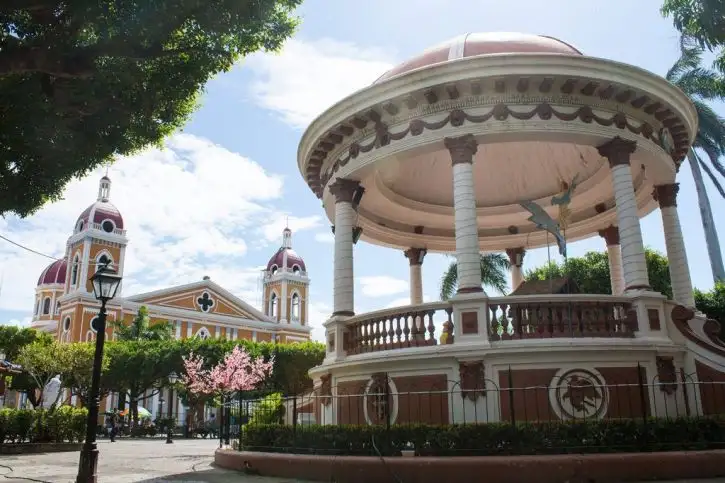
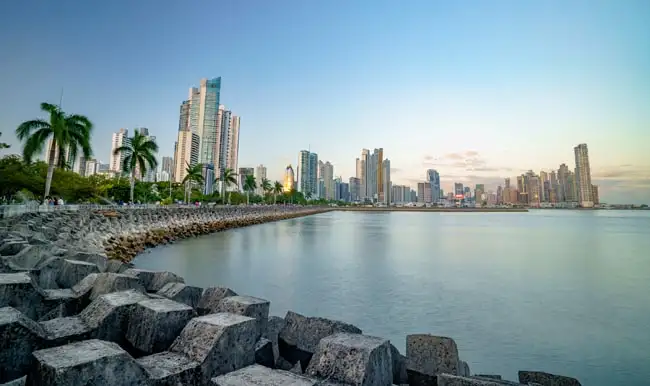
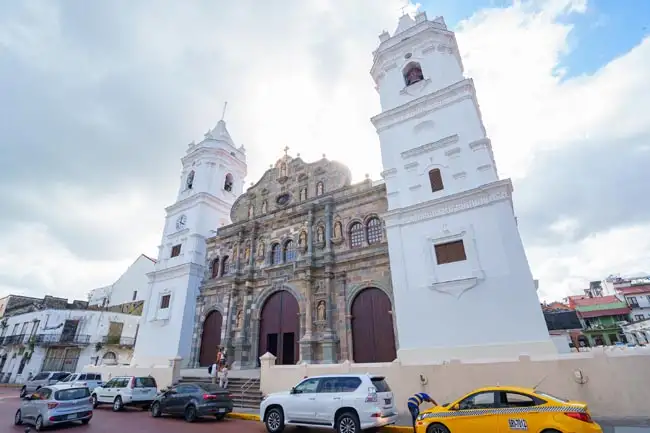


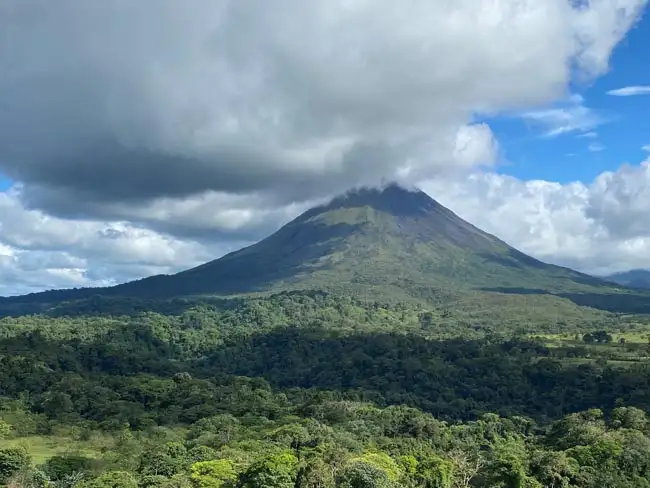
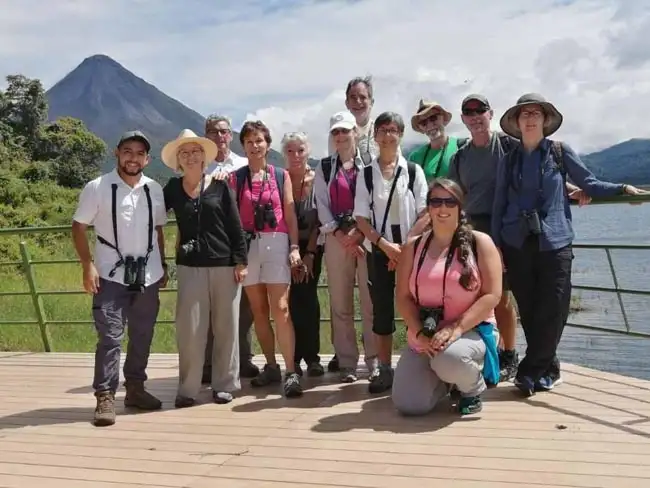

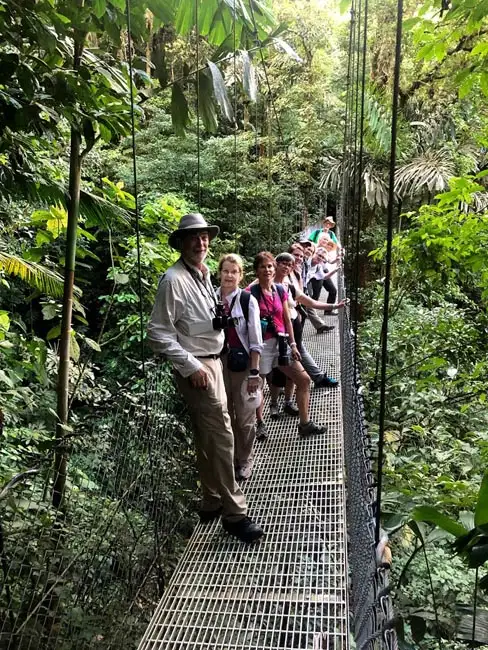
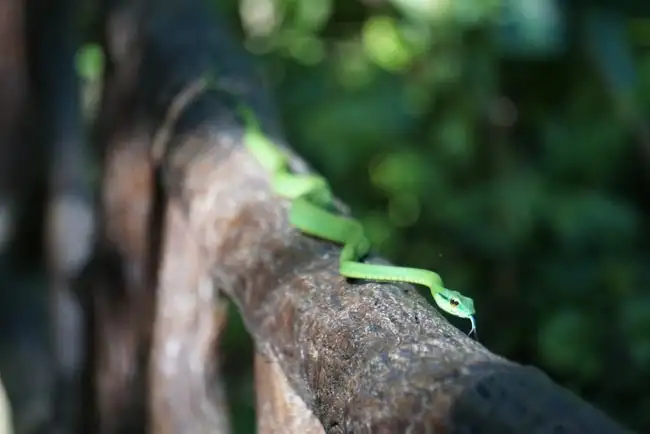

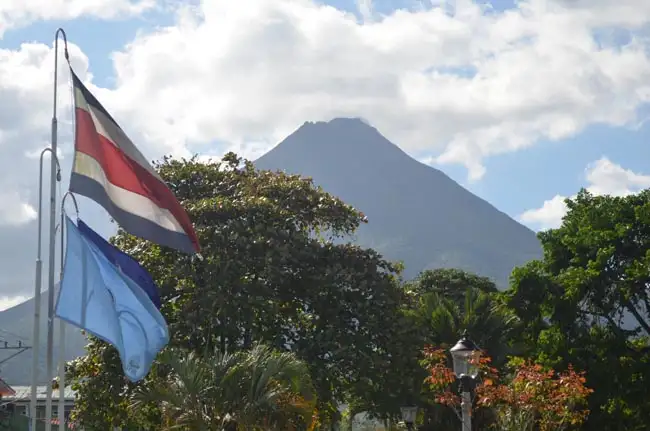
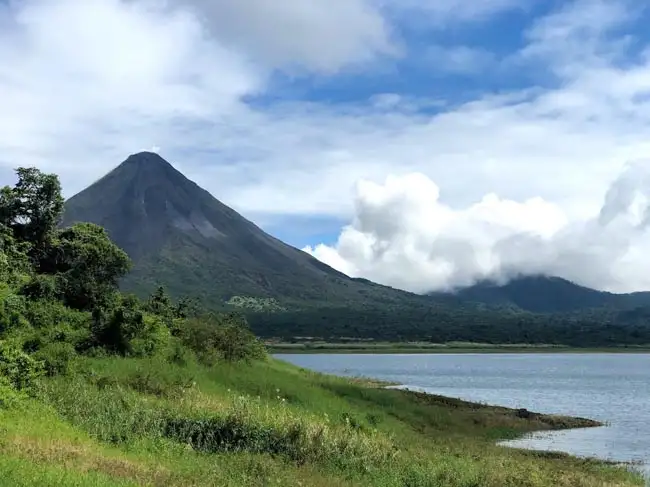

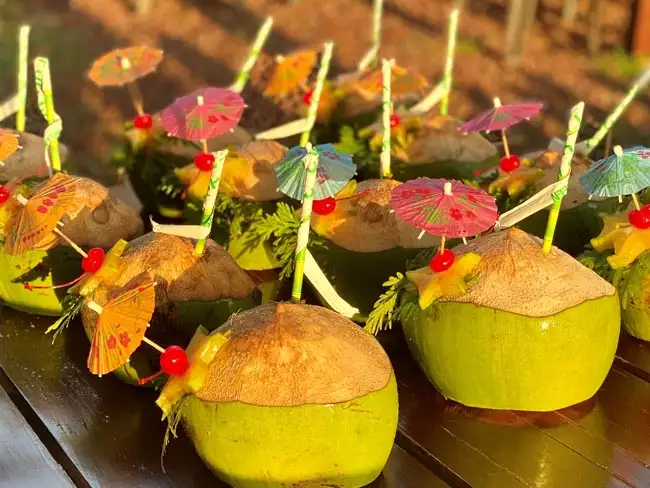

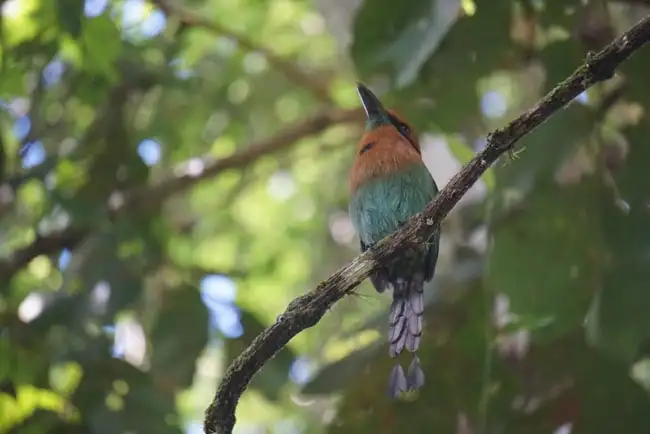
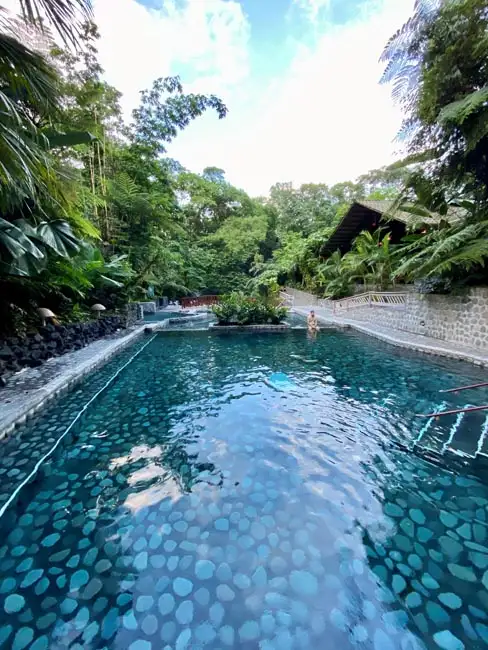
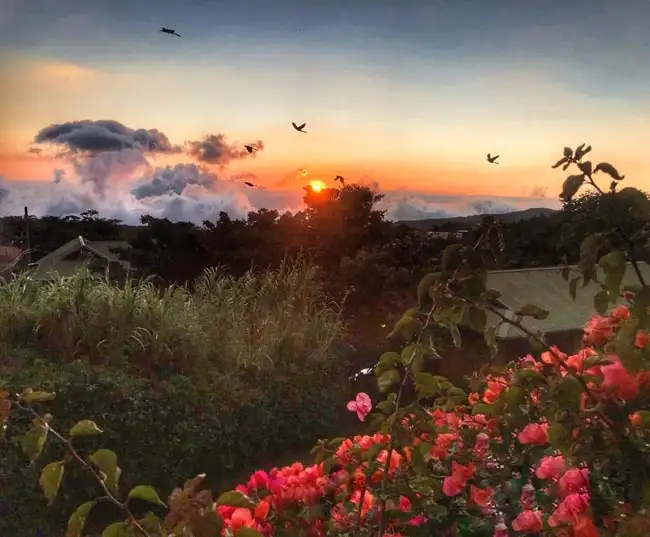
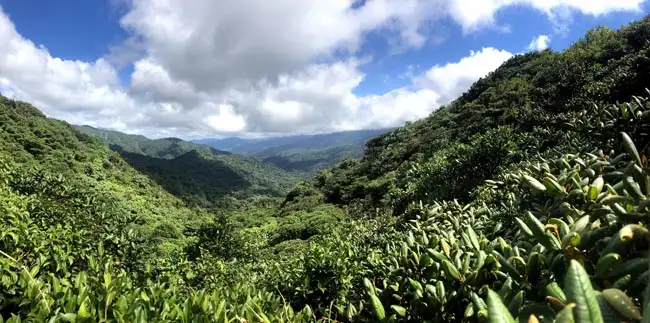

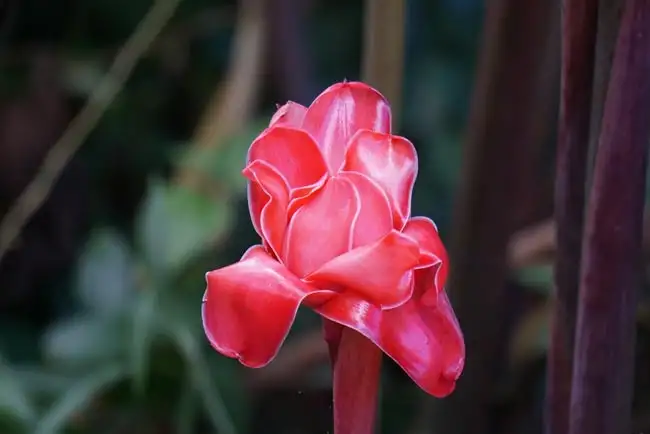
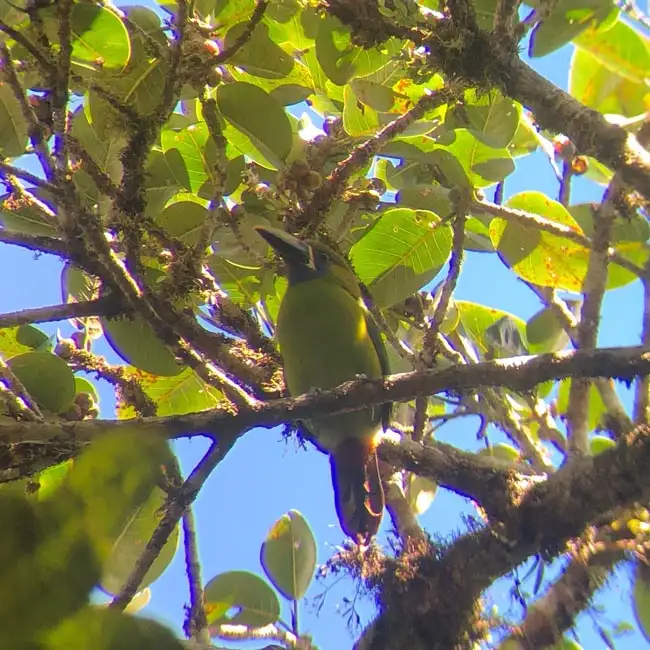
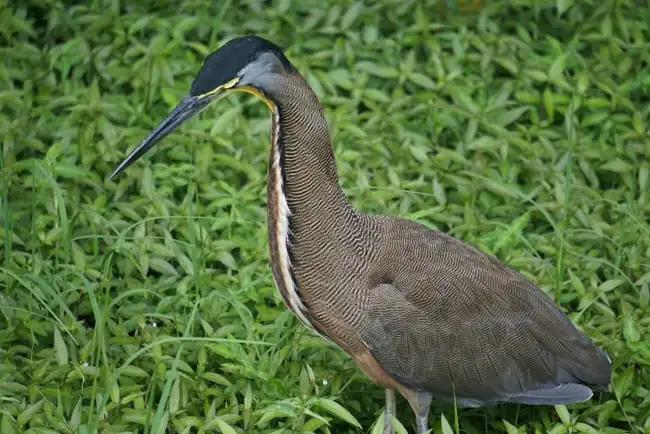

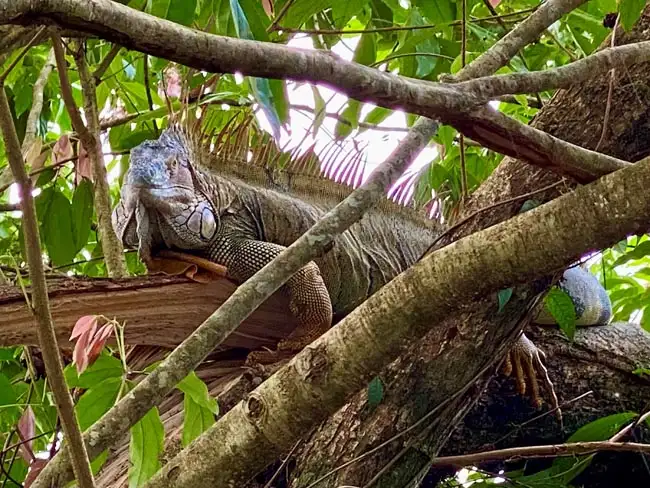
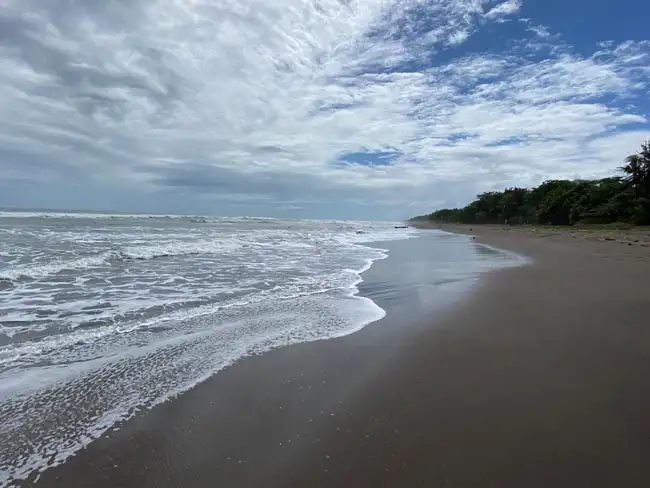
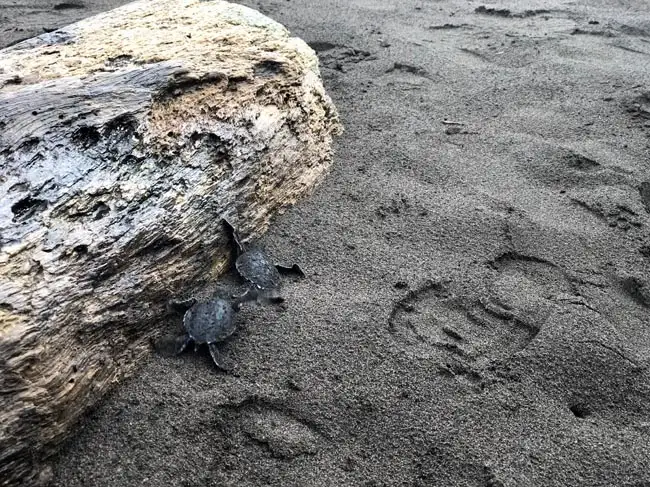
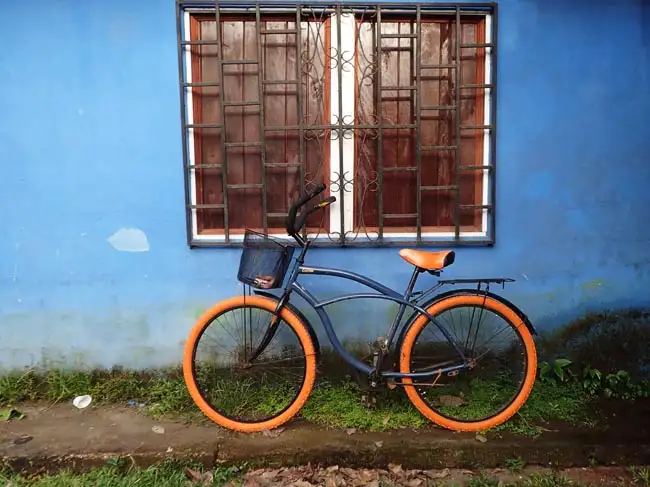



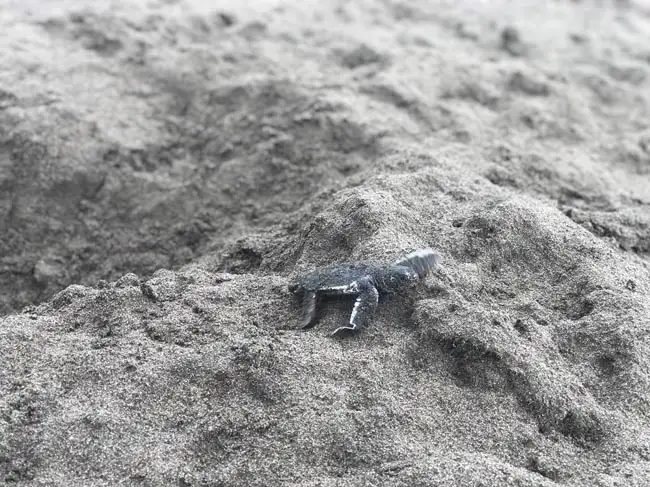
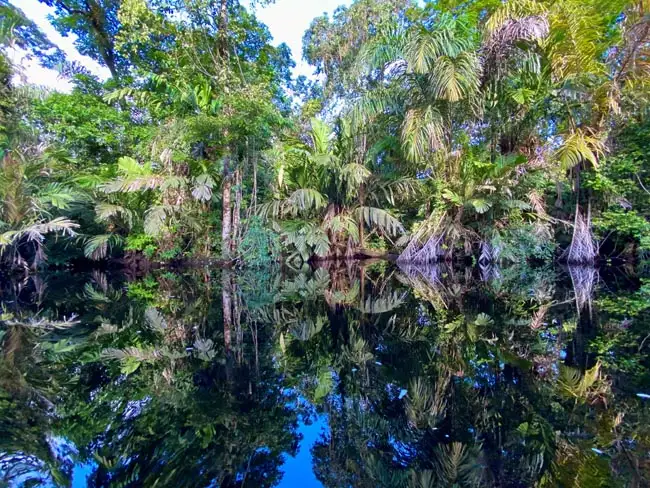

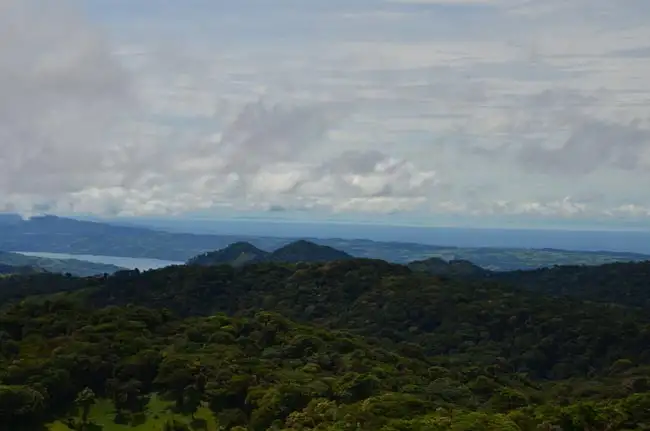
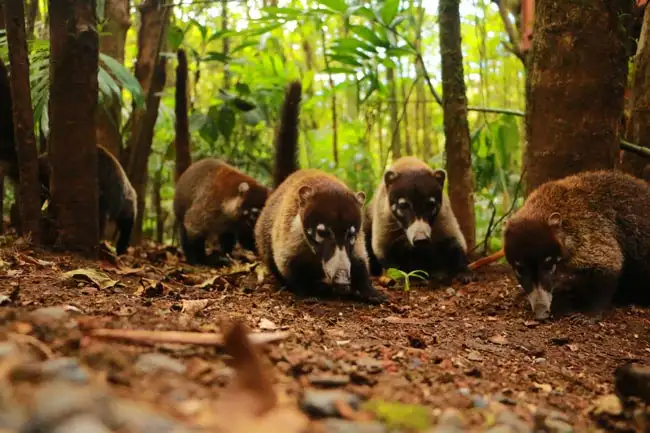
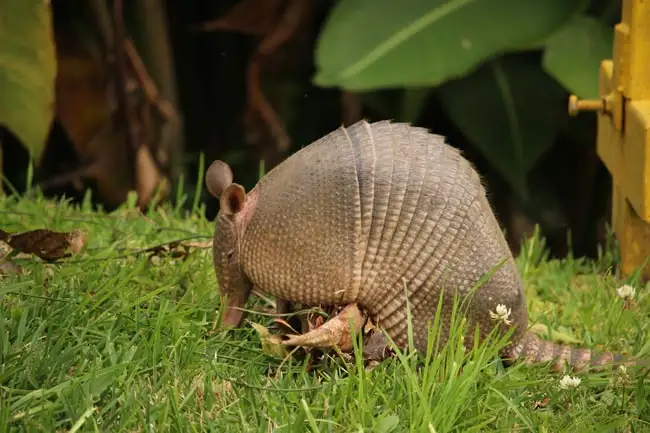
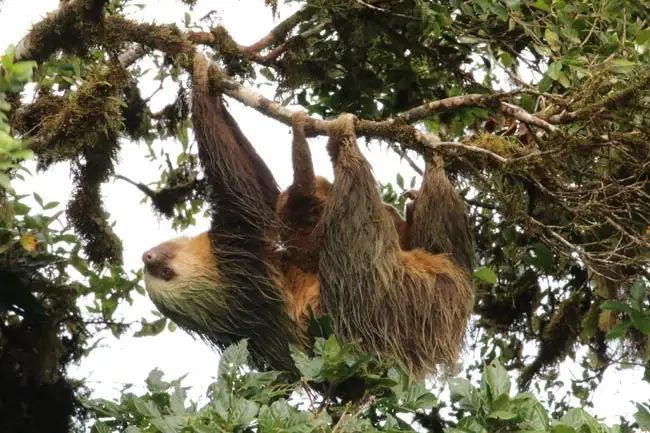

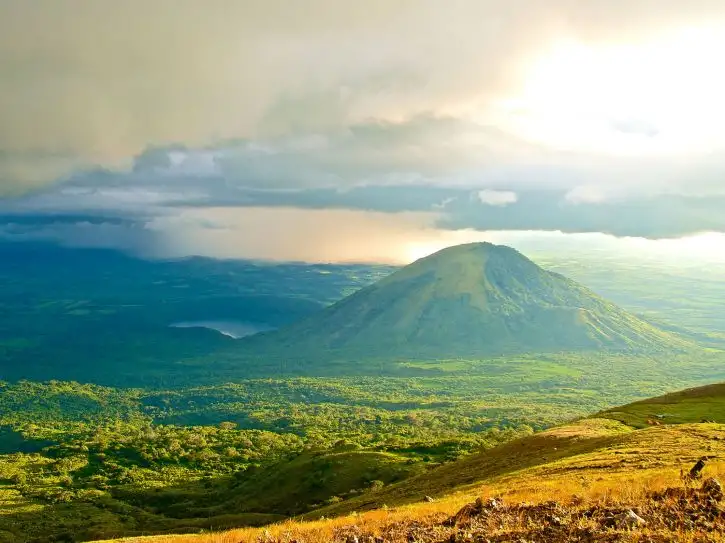
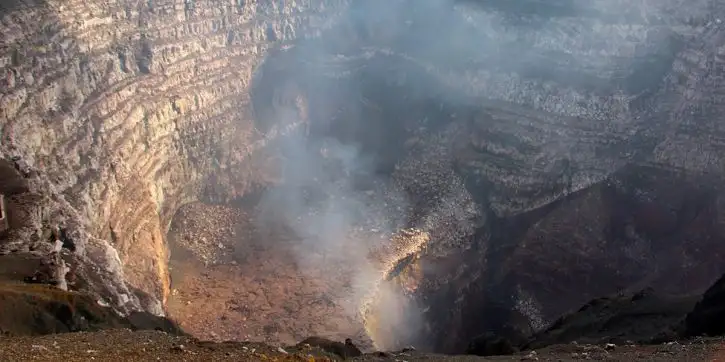


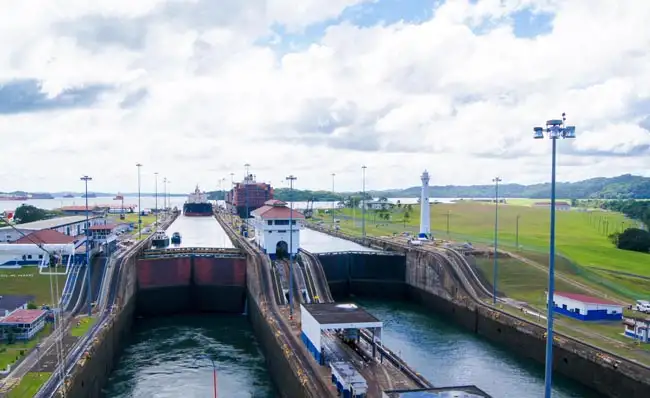




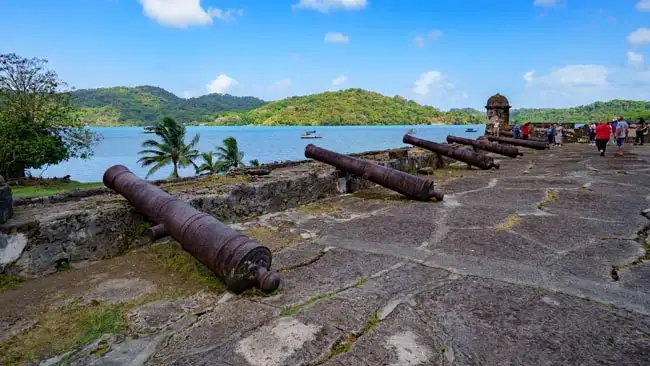

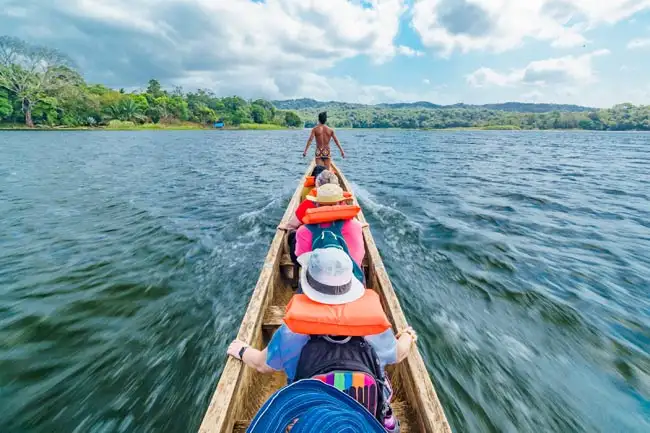


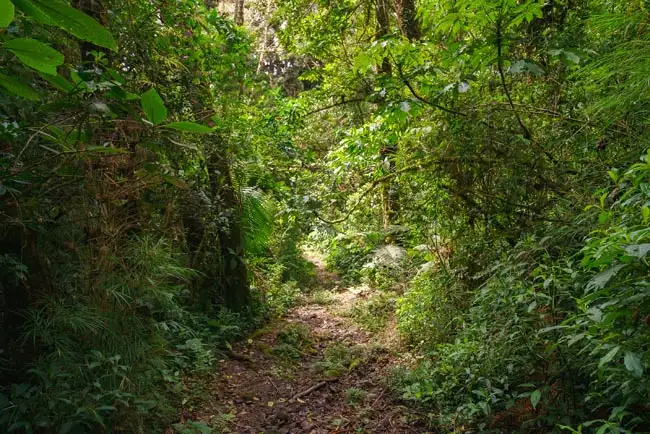
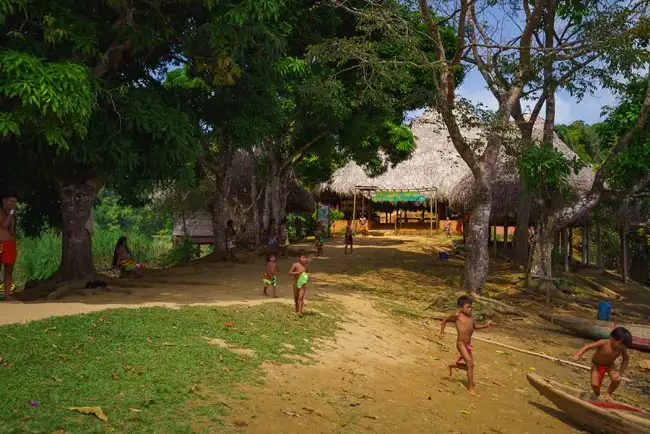
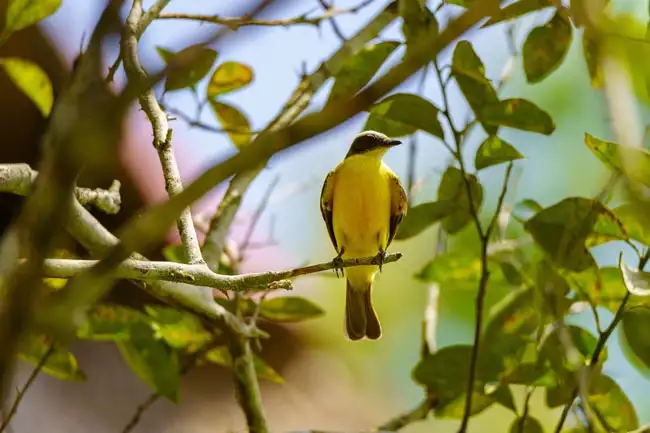
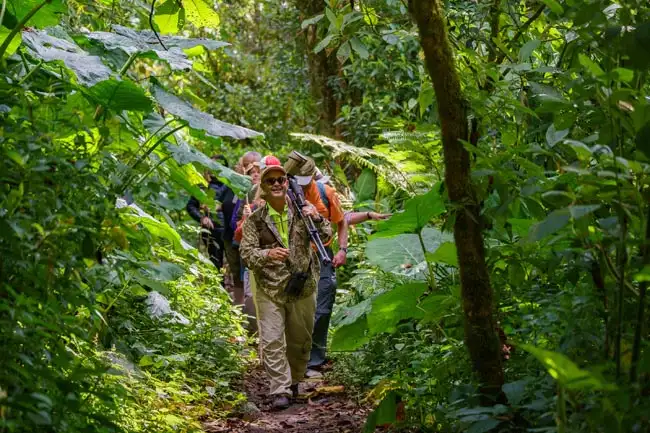

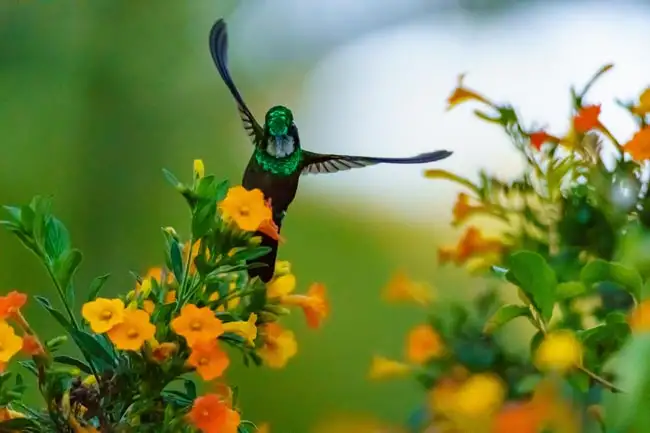
Excellent
Overall Rating
4.7
Extend Your Trip
This tour is part of a series that can be upgraded to make for a longer trip.
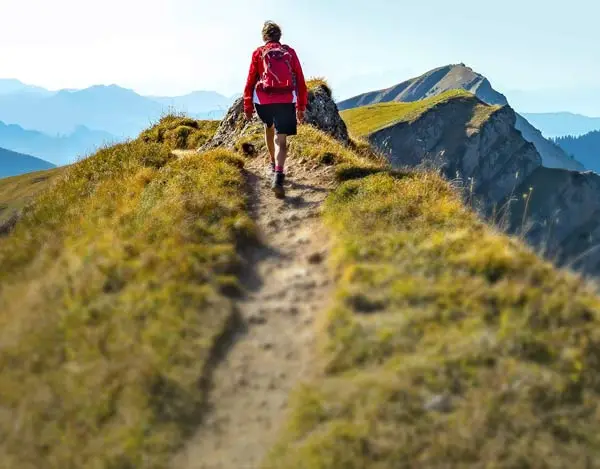
Fast and easy
Book This Tour
Book your unforgettable adventure today! For any questions or advice, don't hesitate to contact us.
Have questions?
1-800-665-3998
- Final payment: Due 90 days prior to departure.
- Deposit: A non-refundable $500 CAD Deposit is required at booking.
- Internal Flight Taxes: An extra $134 CAD applies for taxes and fees on tour flights. The internal airfares are included, but taxes are listed separately as they may change. Exceptions are noted in Red.
- Optional Single Supplement: $2680 CAD (number of singles limited).
(View options forsingle travellers) - Transfering Tour or Date: Transferring to another tour or tour date is only permissible outside of 120 days prior to departure and is subject to a $100 CAD change fee.
(Read our cancellation policy)
Choose your departure date:
Prices below are per person, twin-sharing costs in Canadian Dollars (CAD). Pricing does not include airfare to/from the tour and any applicable taxes.
Prices below are per person, twin-sharing costs in Canadian Dollars (CAD). Pricing does not include airfare to/from the tour and any applicable taxes.
Frequently Asked Questions
- What is the maximum number of participants on a trip?Most of our tours carry a maximum of 18 participants; some tours (ie hiking tours) top out at 16. In the event that we do not achieve our minimum complement by our 90-day deadline, we may offer group members the option of paying a "small-group surcharge" as an alternative to cancellation. If all group members agree, we will confirm the trip at existing numbers; this surcharge is refundable in the event that we ultimately achieve our regular minimum. If the small group surcharge is not accepted, we will offer a refund of your deposit or a different trip of your choice.
- Can I extend my tour either at the beginning or end? What about stopovers?Yes, you can extend your tour either at the beginning or the end and we can book accommodation in our tour hotel. Stopovers are often permitted, depending on air routing. Stopovers usually carry a "stopover" fee levied by the airline.
- How do I make a reservation? How and when do I pay?The easiest way to make a reservation is via our website; during office hours, you are also more than welcome to contact us by telephone.
A non-refundable deposit is payable at the time of booking; if a reservation is made within 90 days, full payment is required. Some trips require a larger deposit. If international airline bookings require a non-refundable payment in order to secure space or the lowest available fare, we will require an increase in deposit equal to the cost of the ticket(s).
Early enrolment is always encouraged as group size is limited and some trips require greater preparation time.
Once we have received your deposit, we will confirm your space and send you a confirmation package containing your trip itinerary, any visa/travel permit related documents, invoice, clothing and equipment recommendations, general information on your destination(s), and forms for you to complete, sign and return to us. Your air e-tickets (if applicable), final hotel list, final trip itinerary, and instructions on how to join your tour, will be sent approximately 2-3 weeks prior to departure. - What about cancellations, refunds, and transfers?Please review our cancellation policy page for details.
- I am a single who prefers my own room. What is a single supplement?All of our tours have a single supplement for those who want to be guaranteed their own room at each location.
This supplement is a reflection of the fact that most hotels around the world do not discount the regular twin-share rate for a room by 50% for only one person occupying a room. Most hotels will give a break on the price, but usually in the range of 25-30% of the twin-share rate. This difference, multiplied by each night, amounts to the single supplement.
The conventional amount can also vary from country to country and some destinations are more expensive than others for single occupancy. In order to be "single friendly," the supplements we apply are not a profit centre for us and we do our best to keep them as reasonable as possible.
On most tours we limit the number of singles available, not to be punitive, but rather because many hotels allow for only a limited number of singles; some smaller hotels at remote locations also have a limited number of single rooms available.
Please note that most single rooms around the world are smaller than twin-share rooms and will likely have only one bed. - Do you have a shared accommodation program?Yes! If you are single traveller and are willing to share, we will do our best to pair you with a same-gender roommate. Please note that should we fail to pair you, we will absorb the single supplement fee and you will default to a single room at no extra charge.
